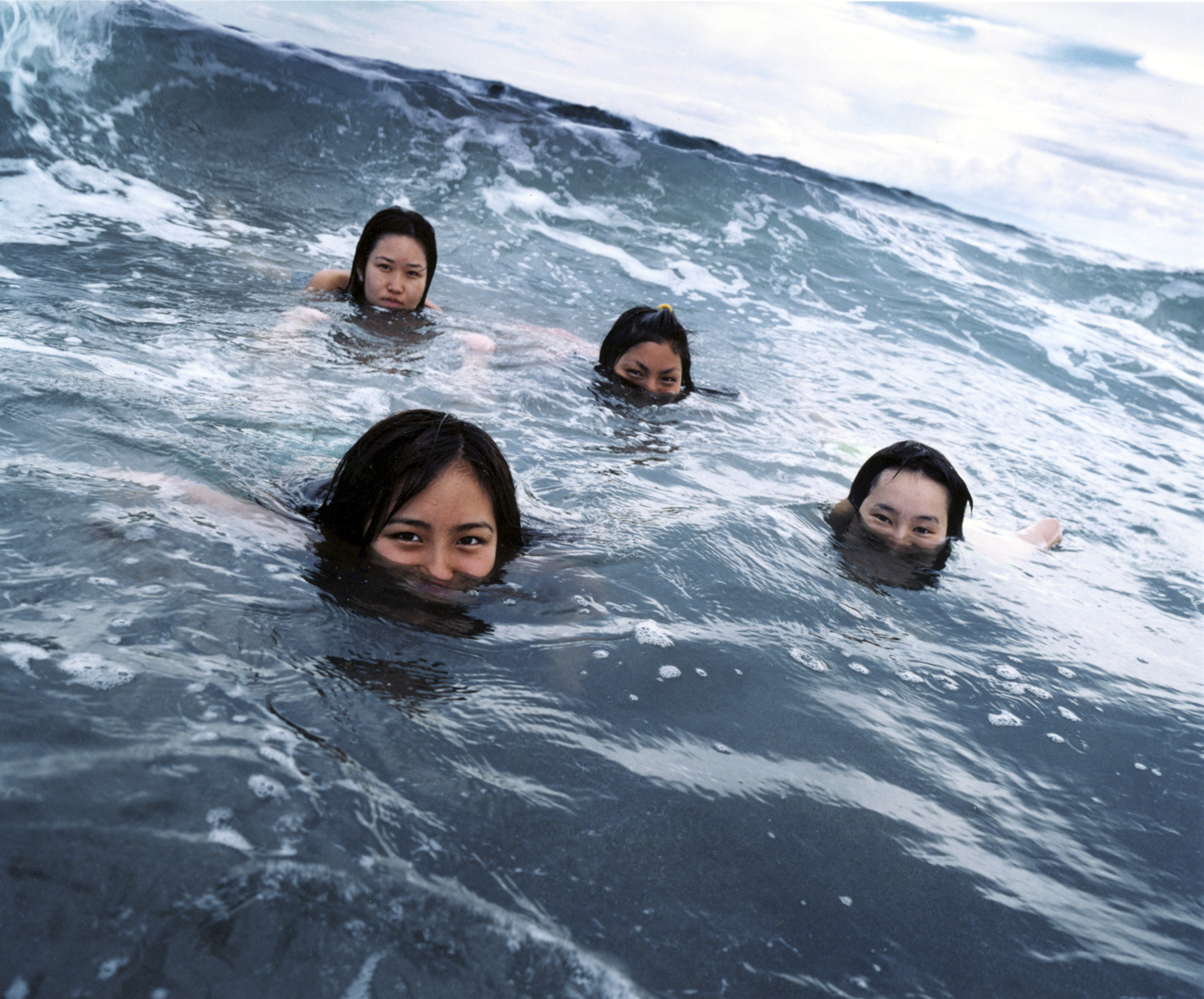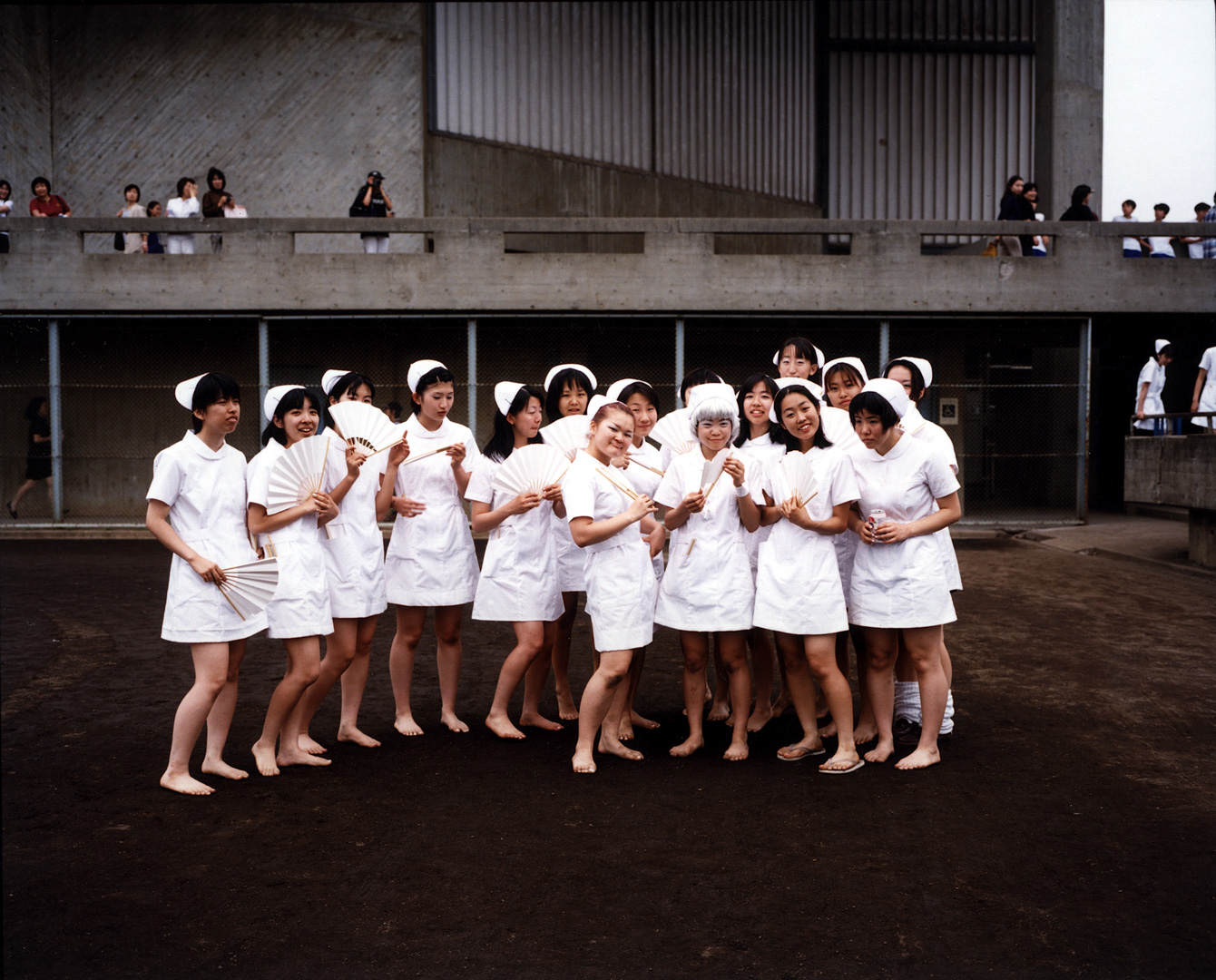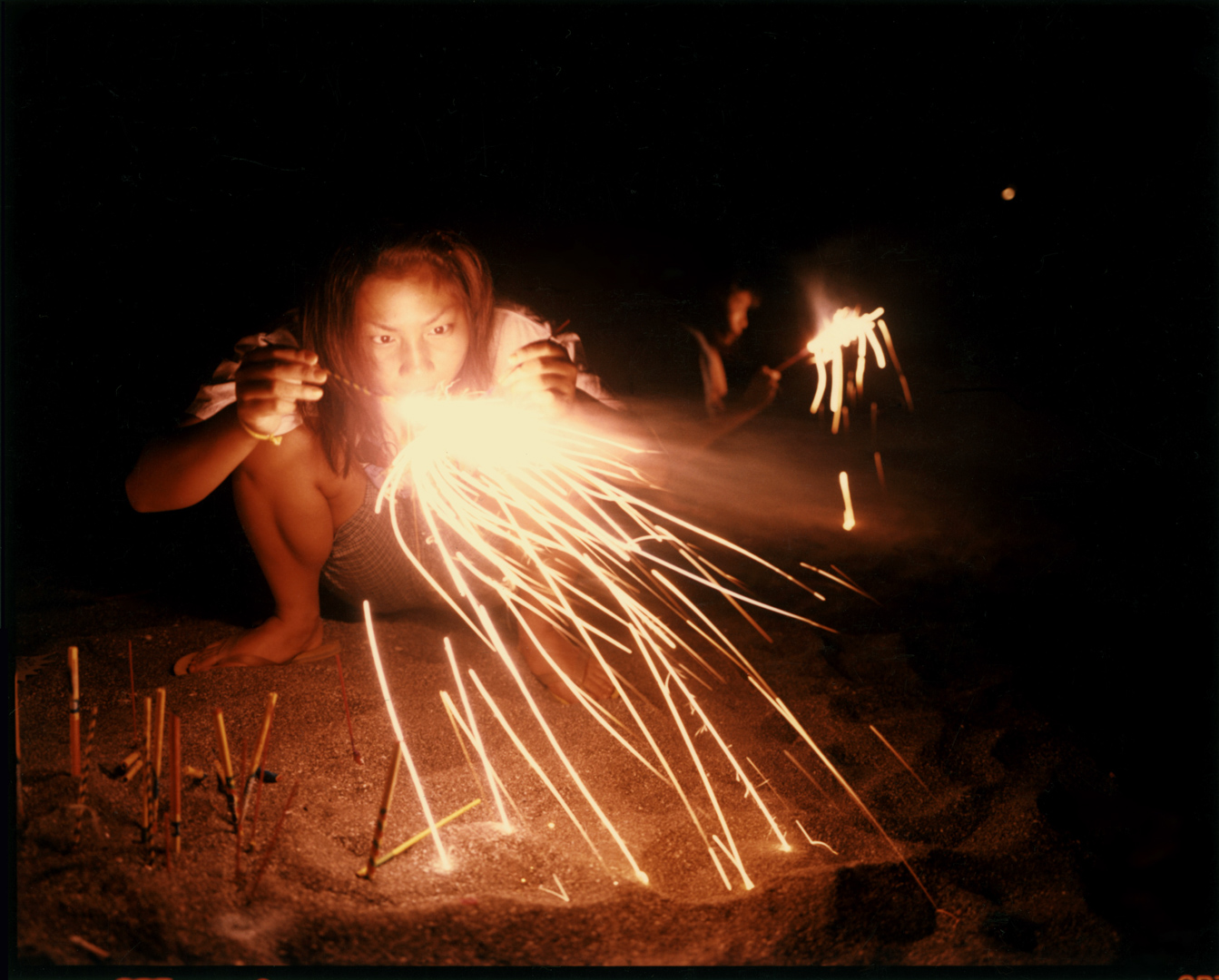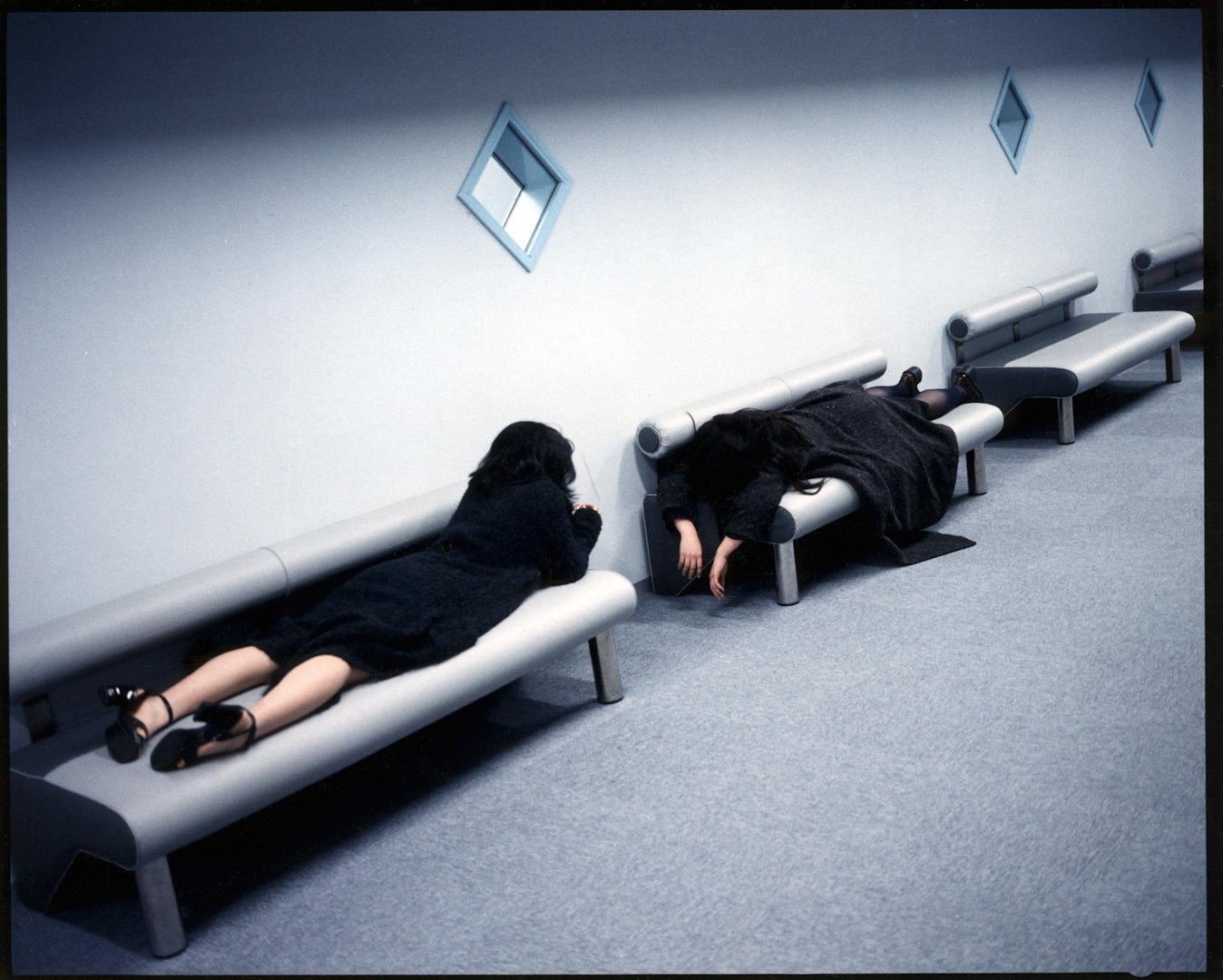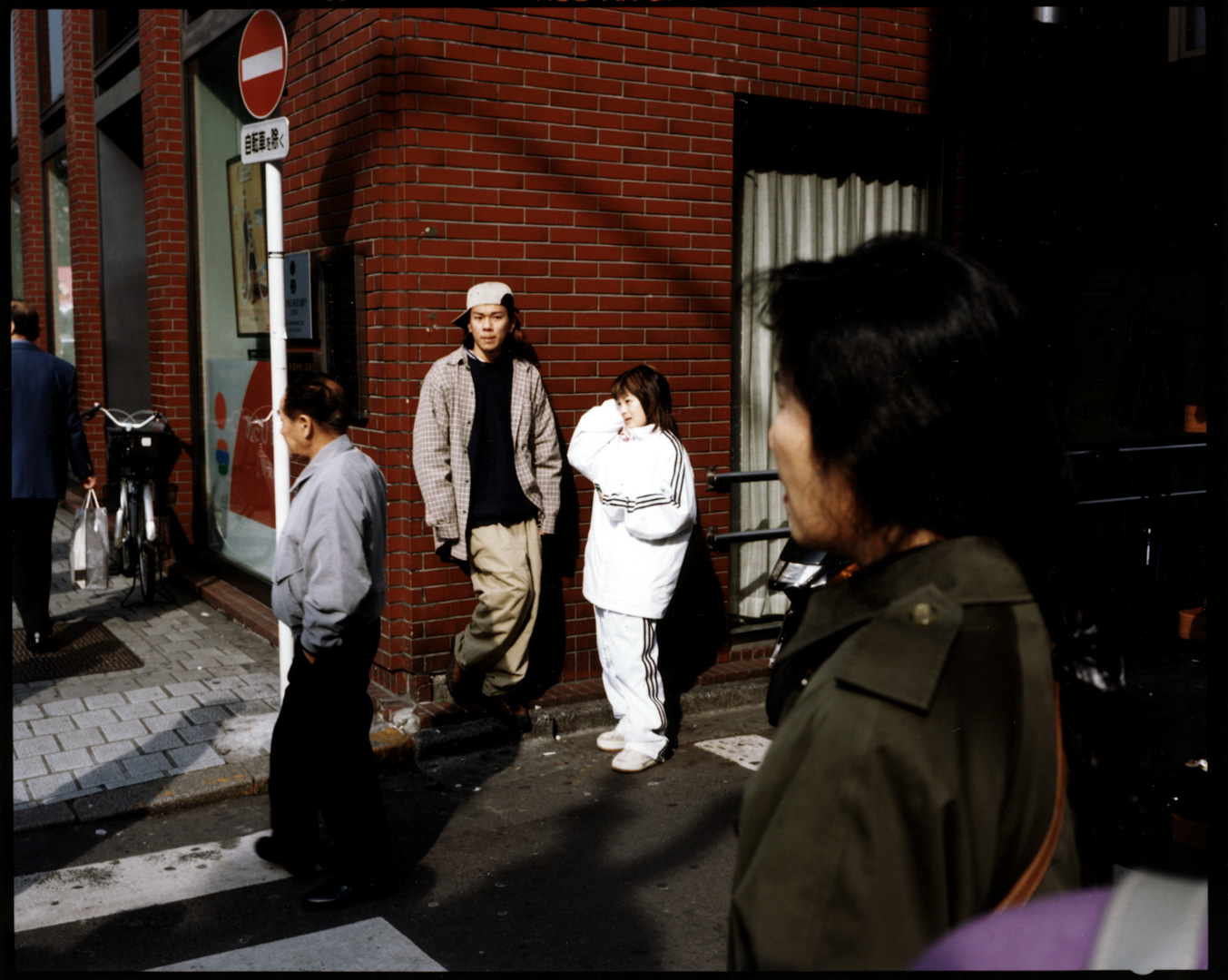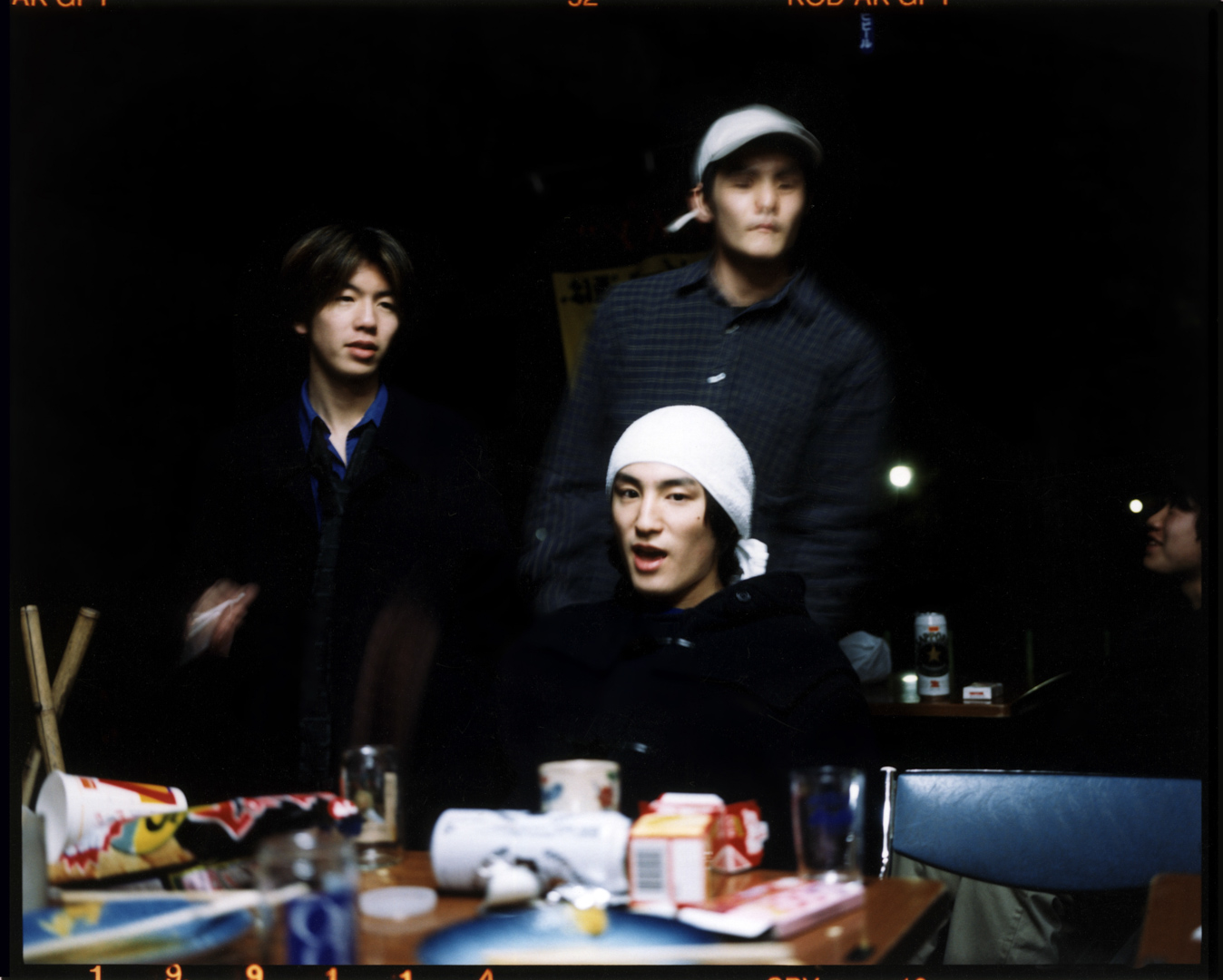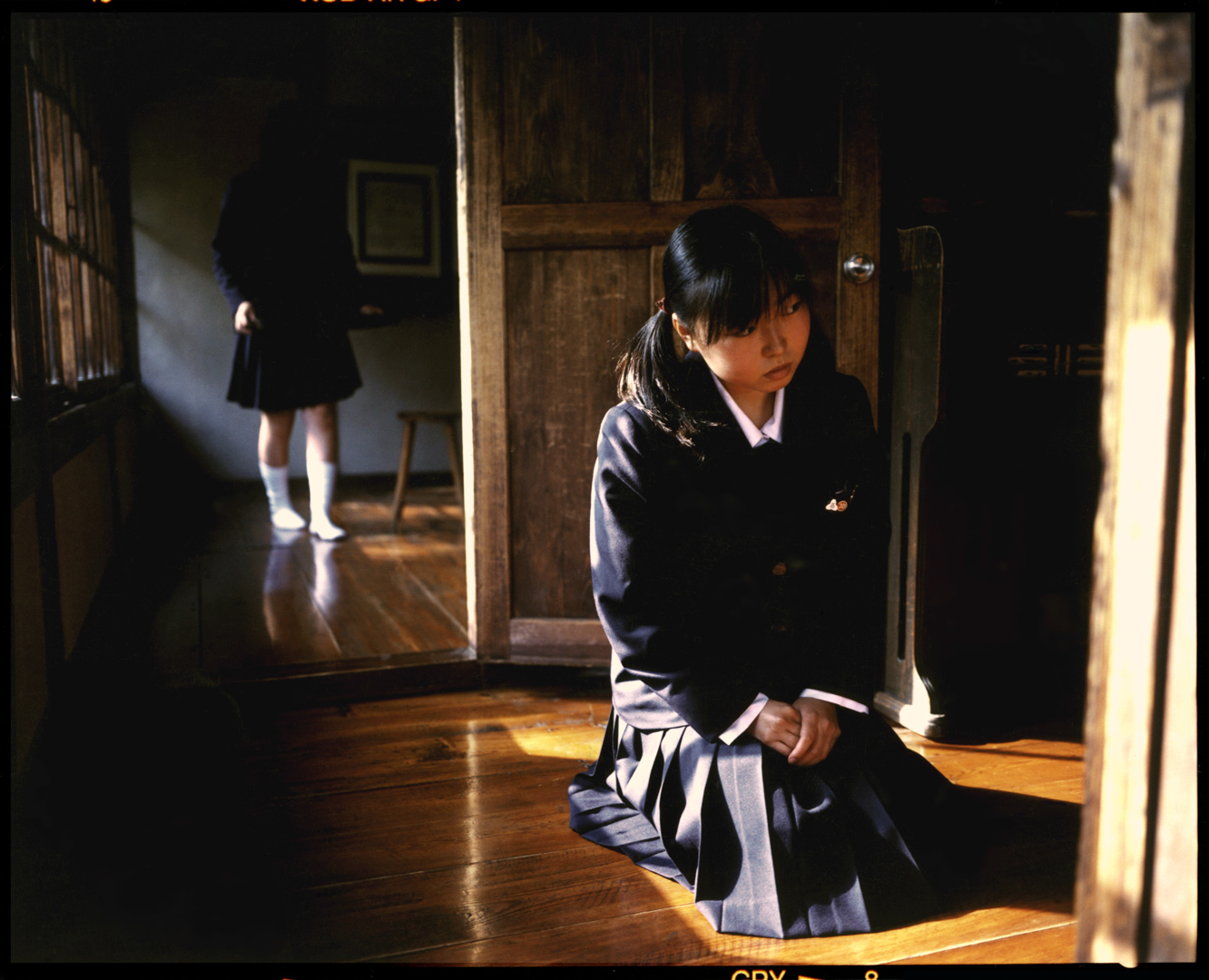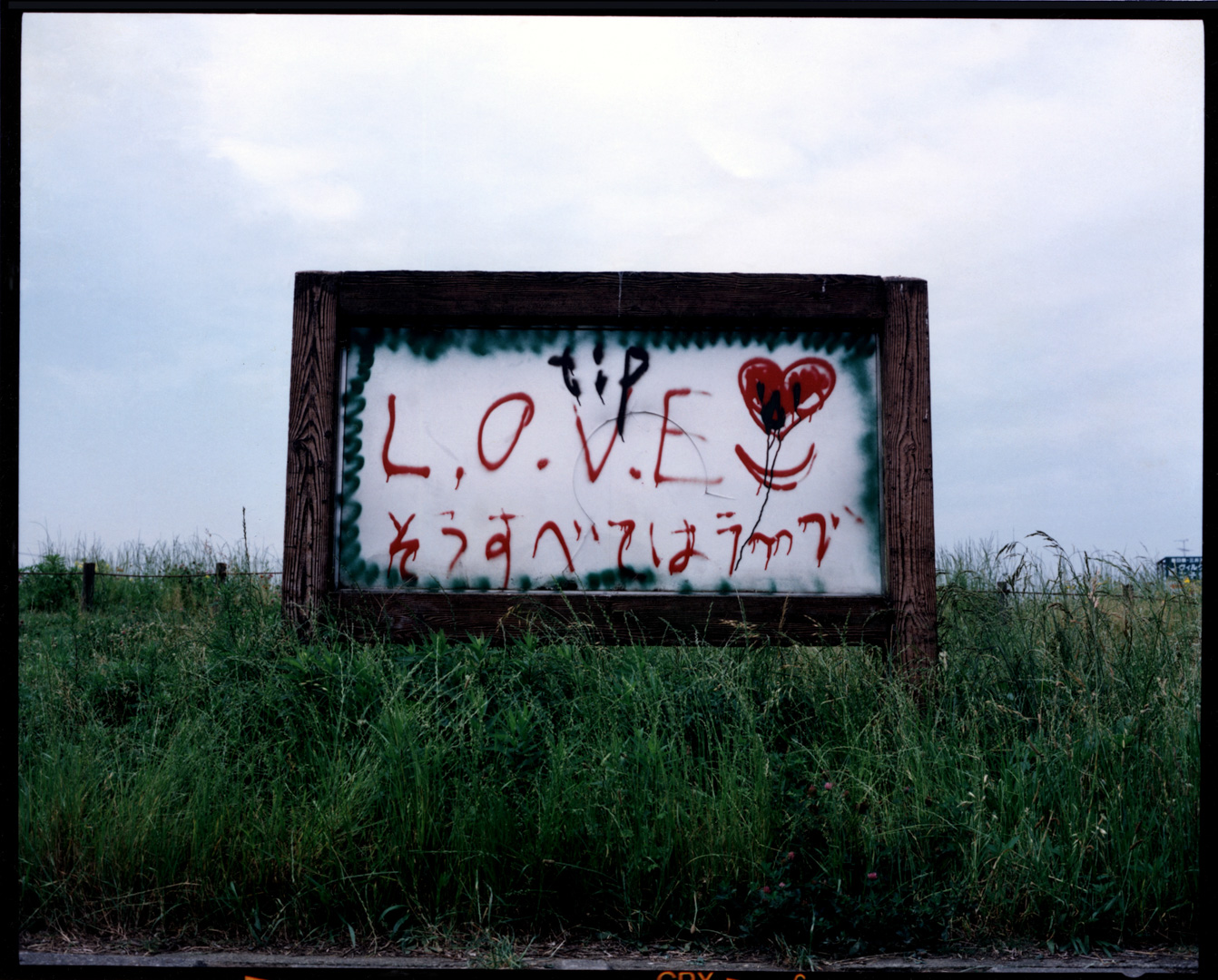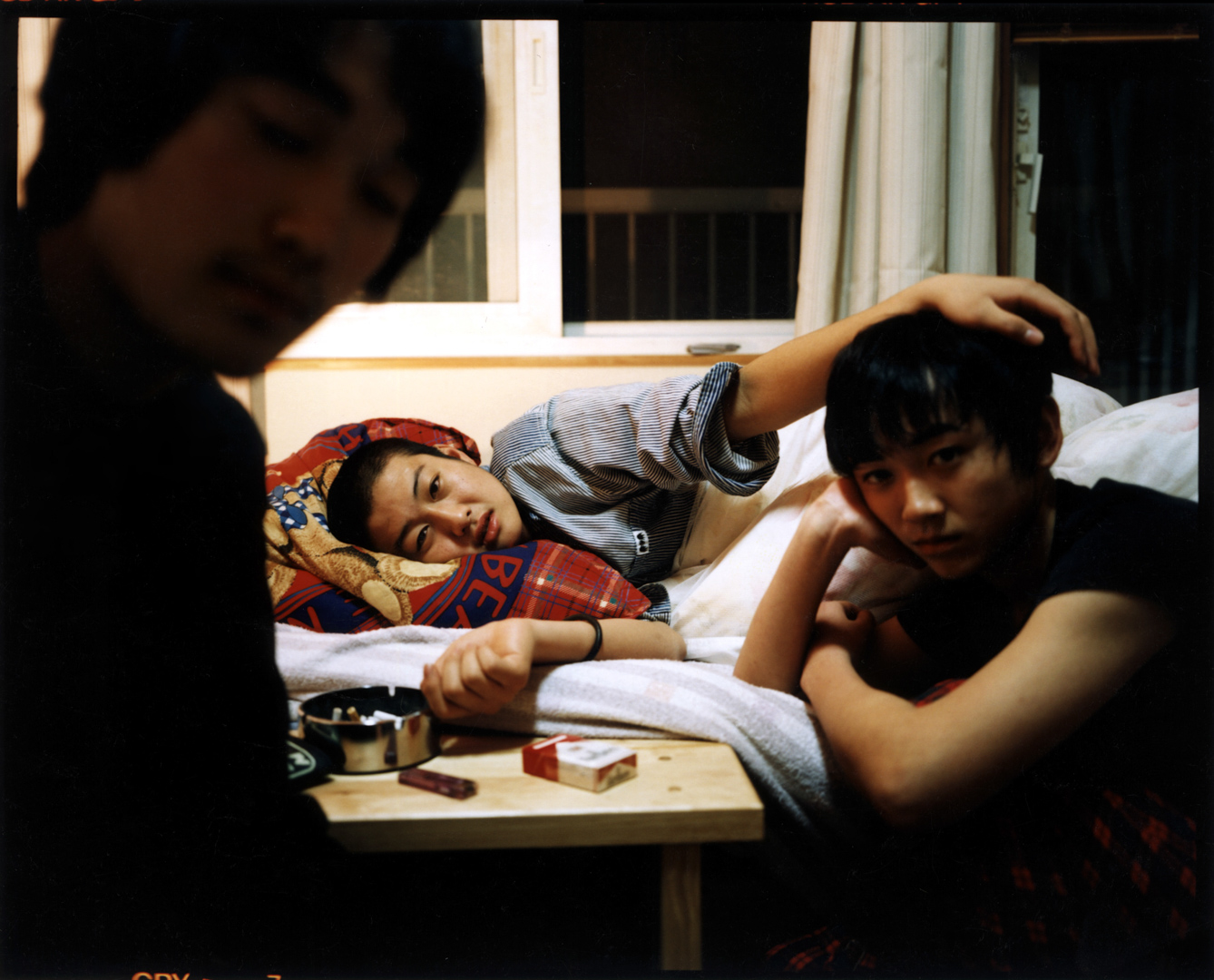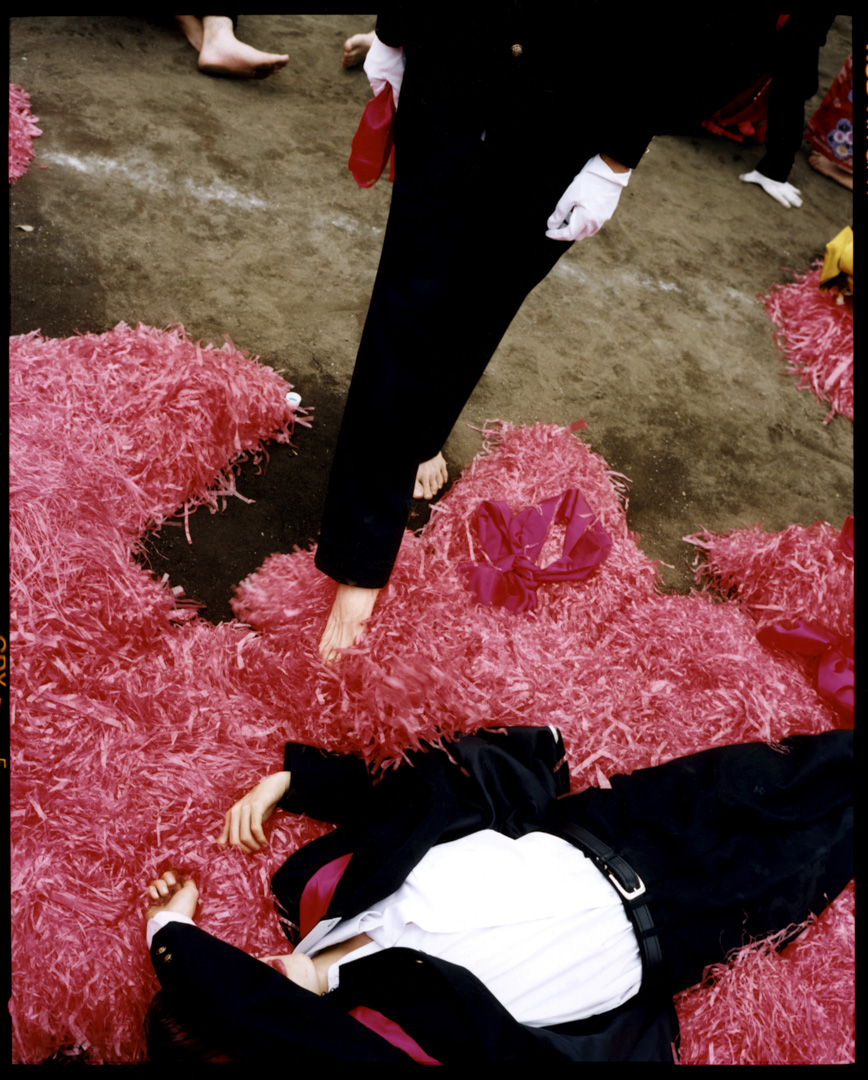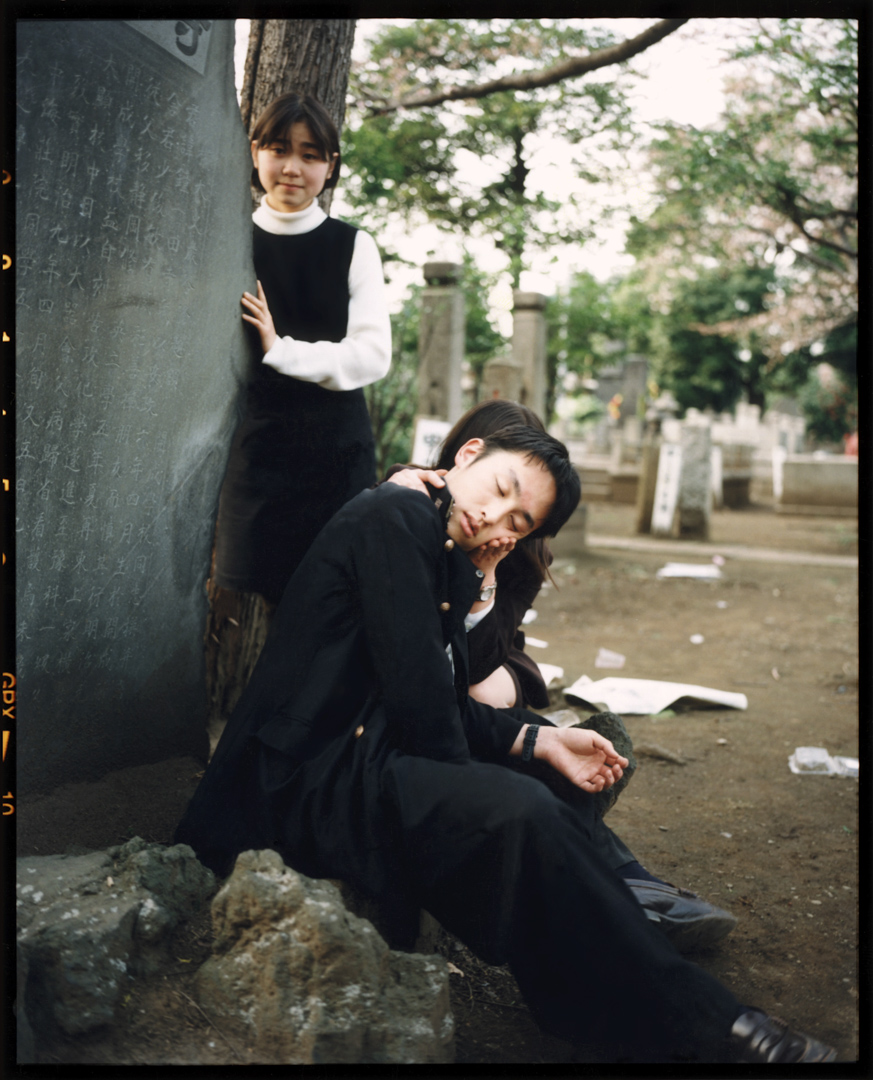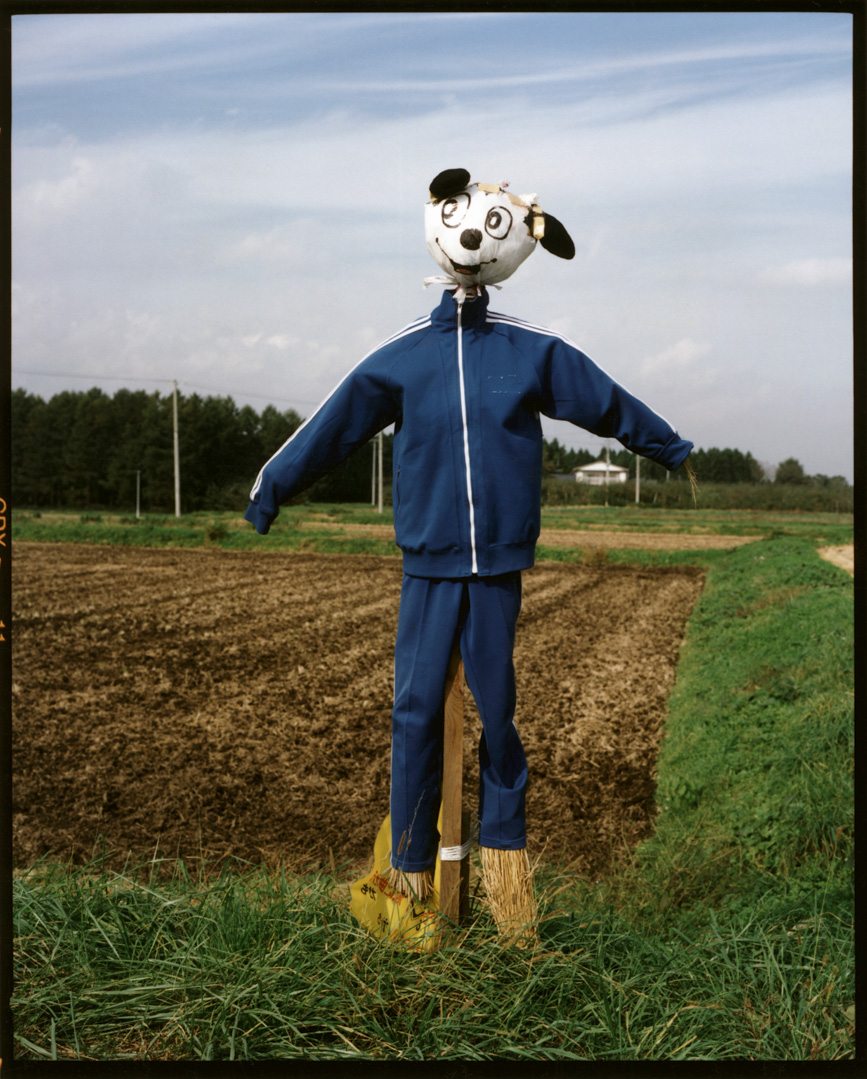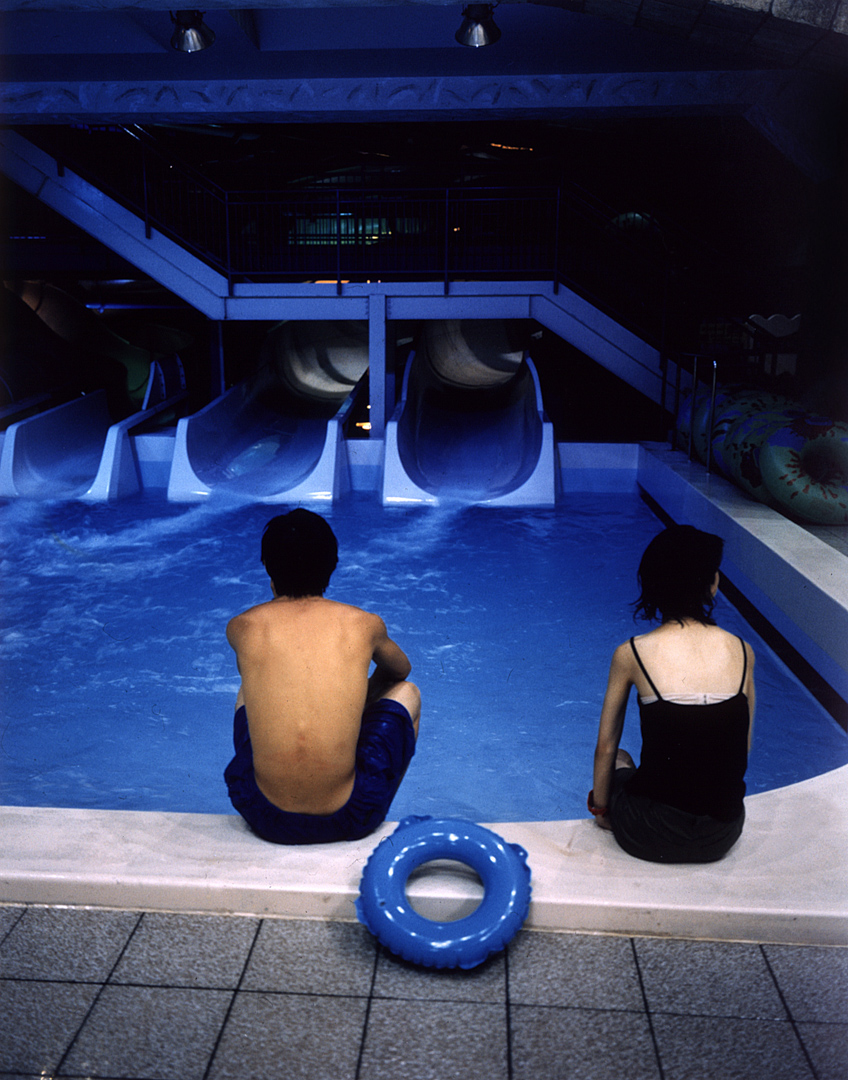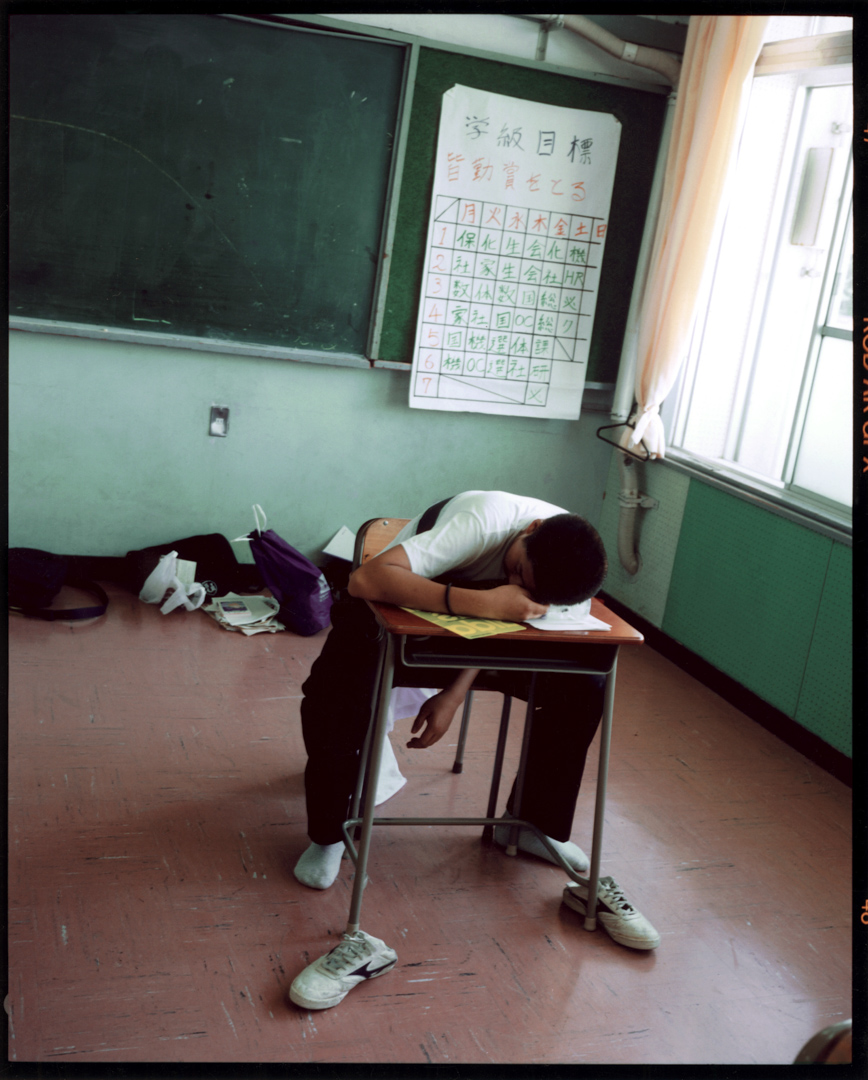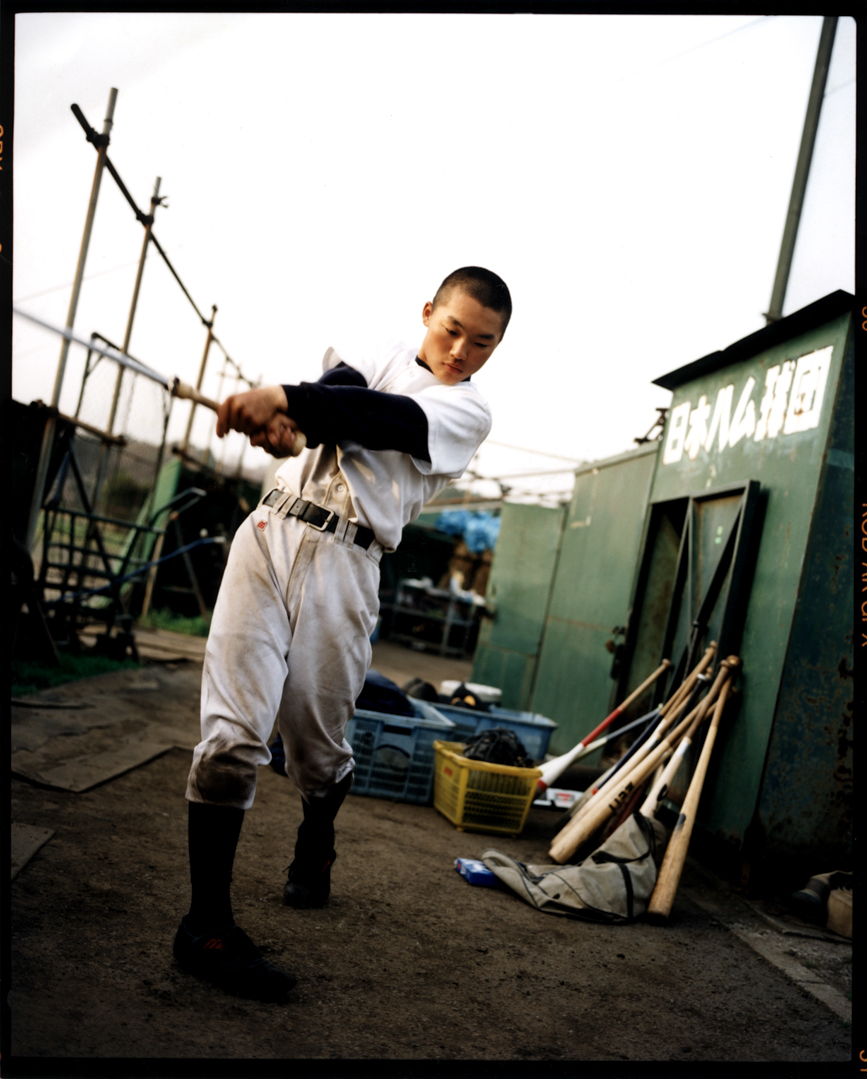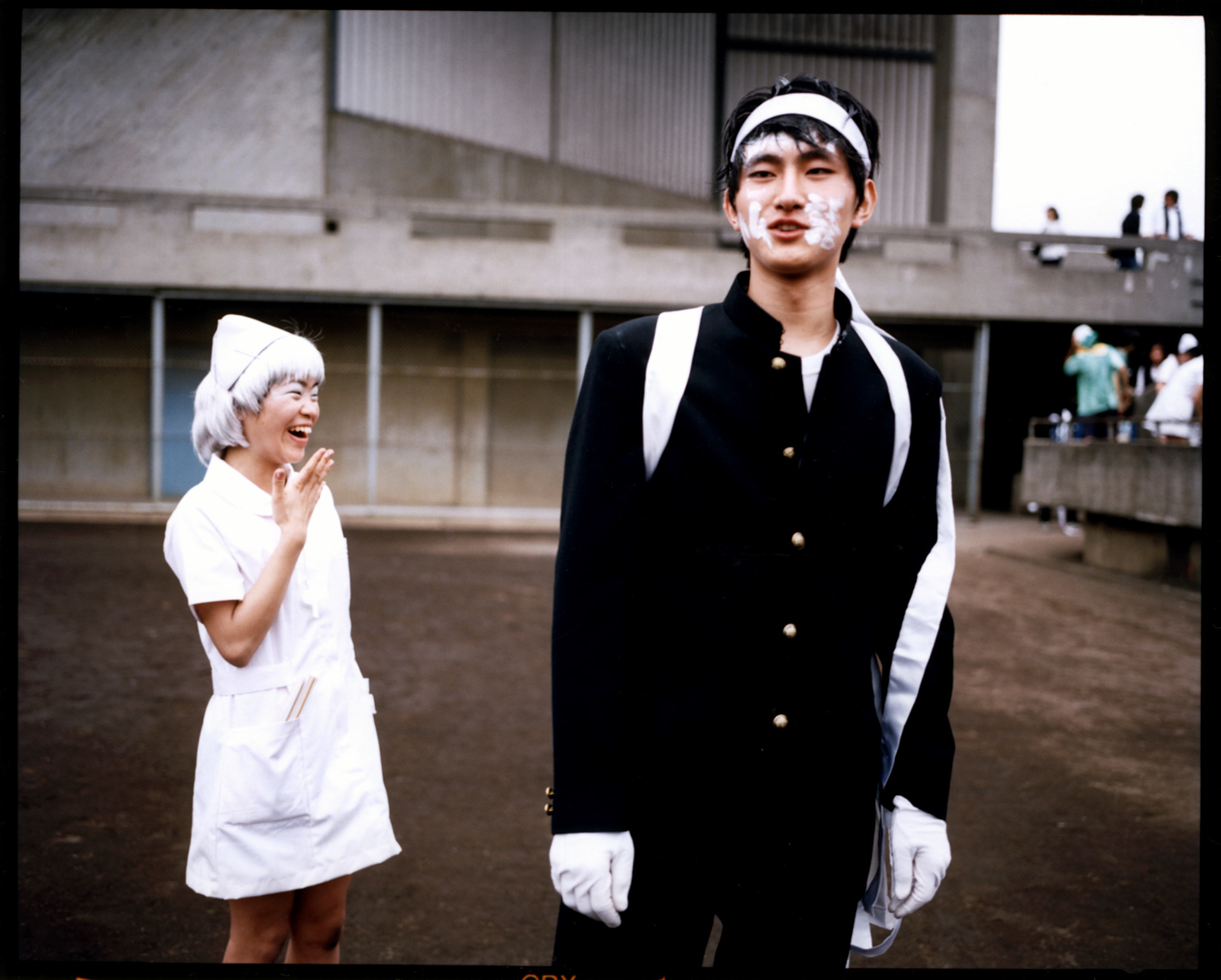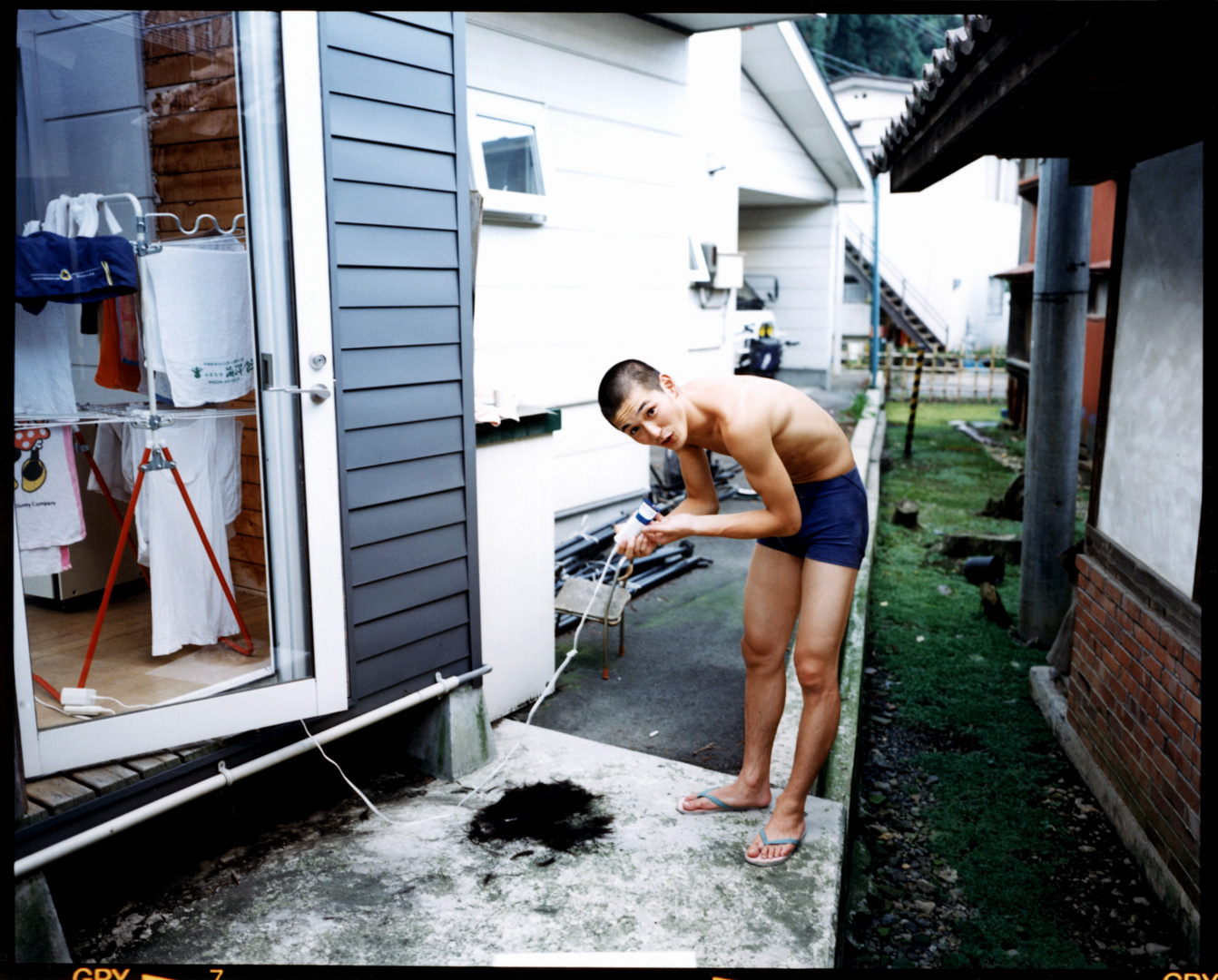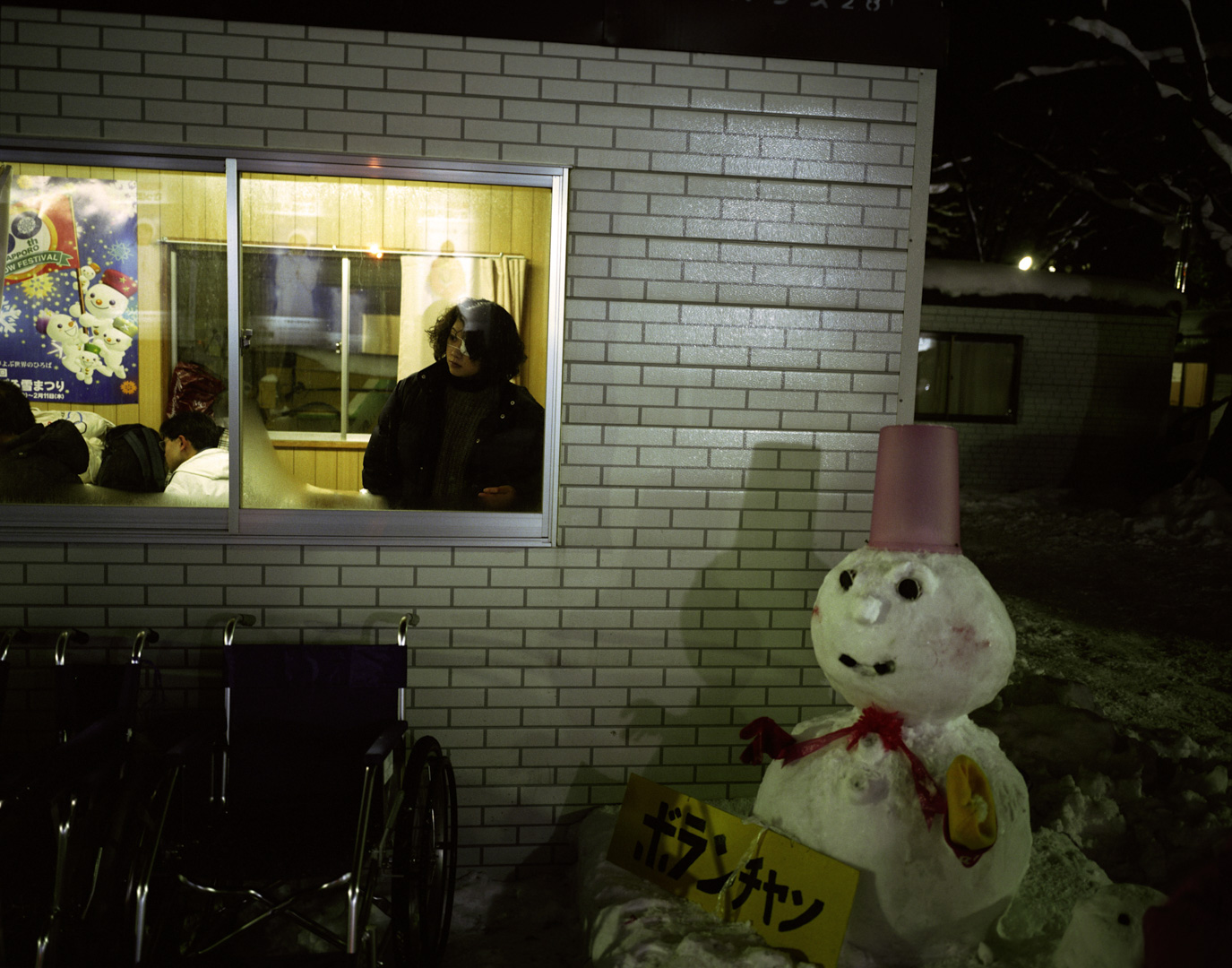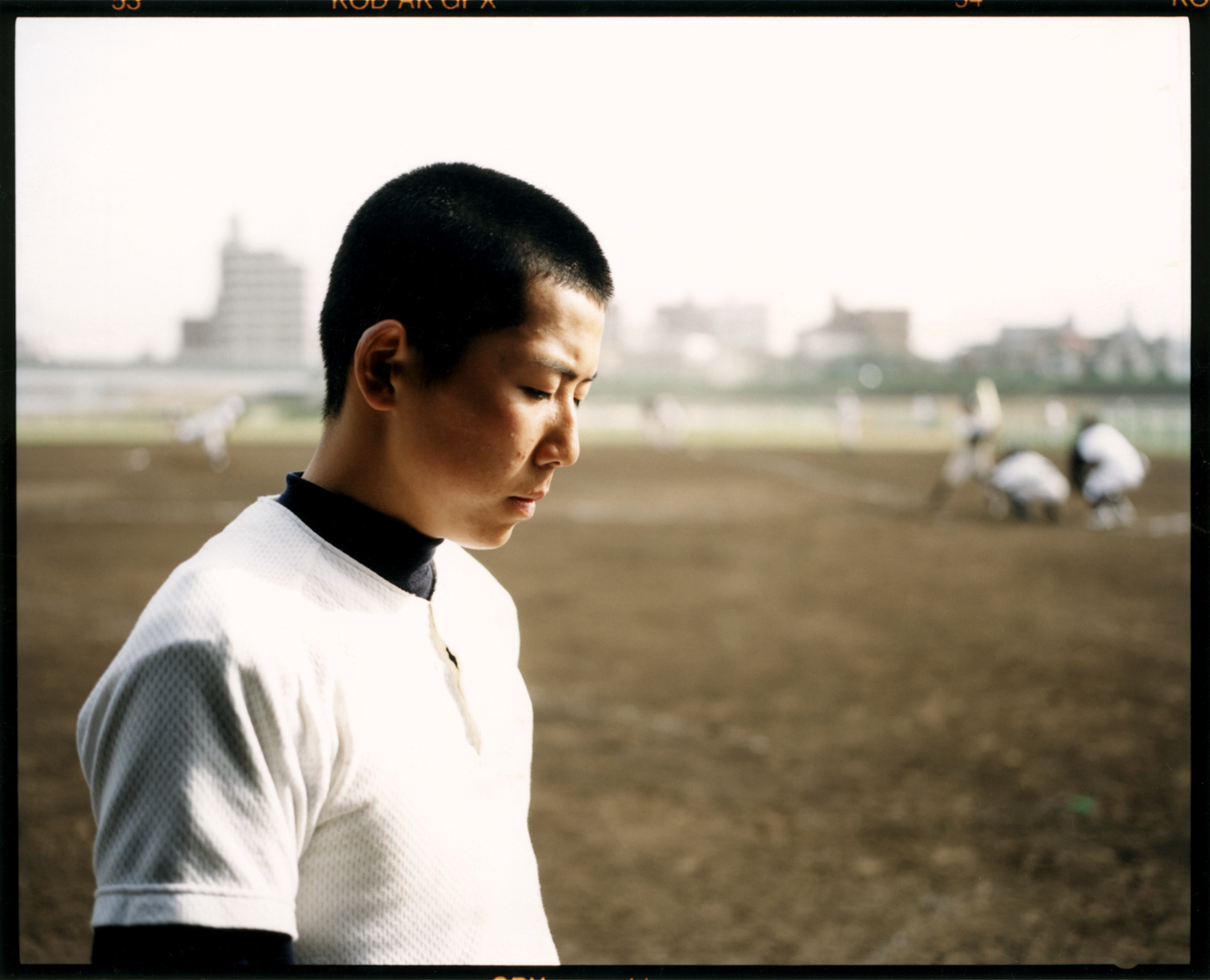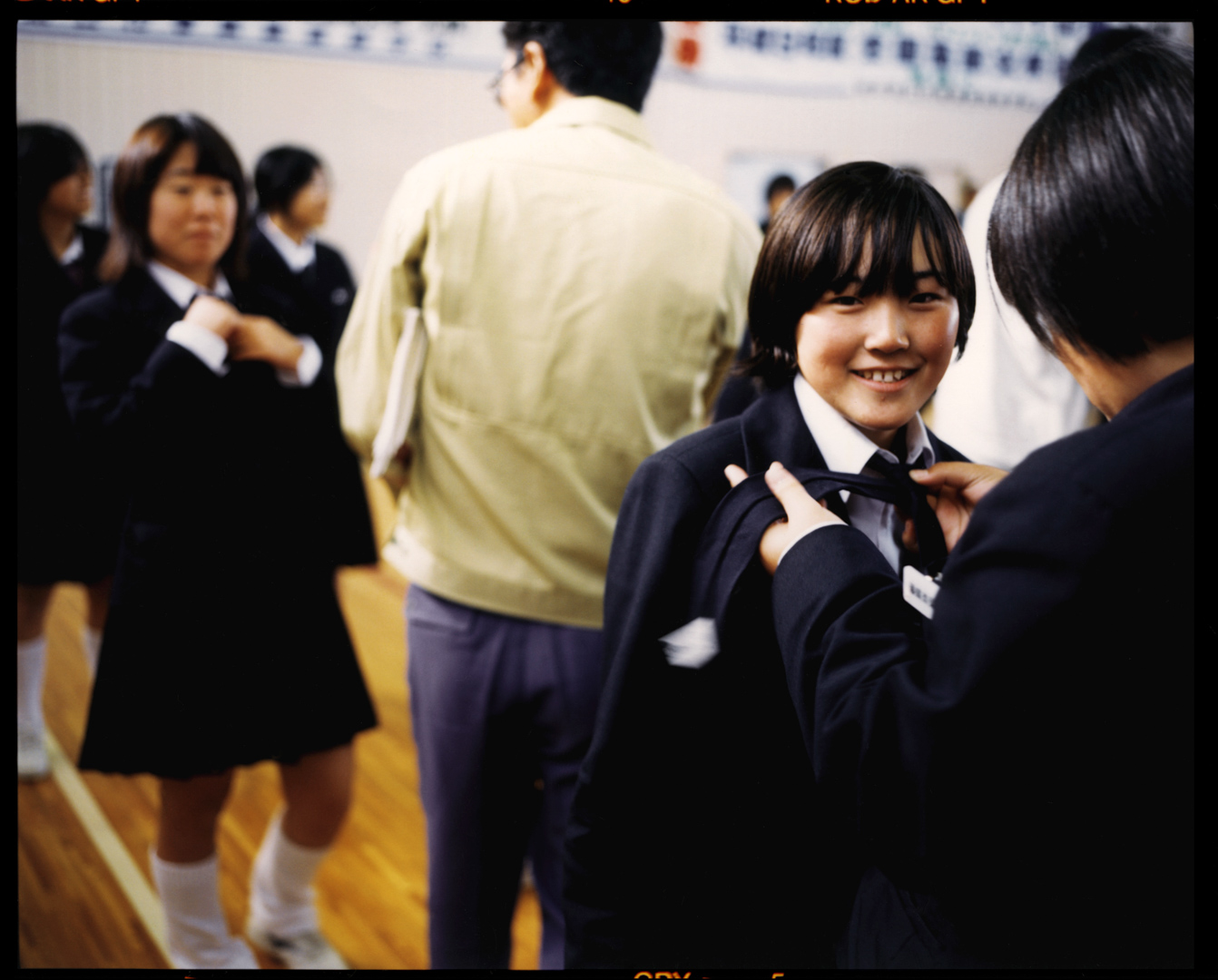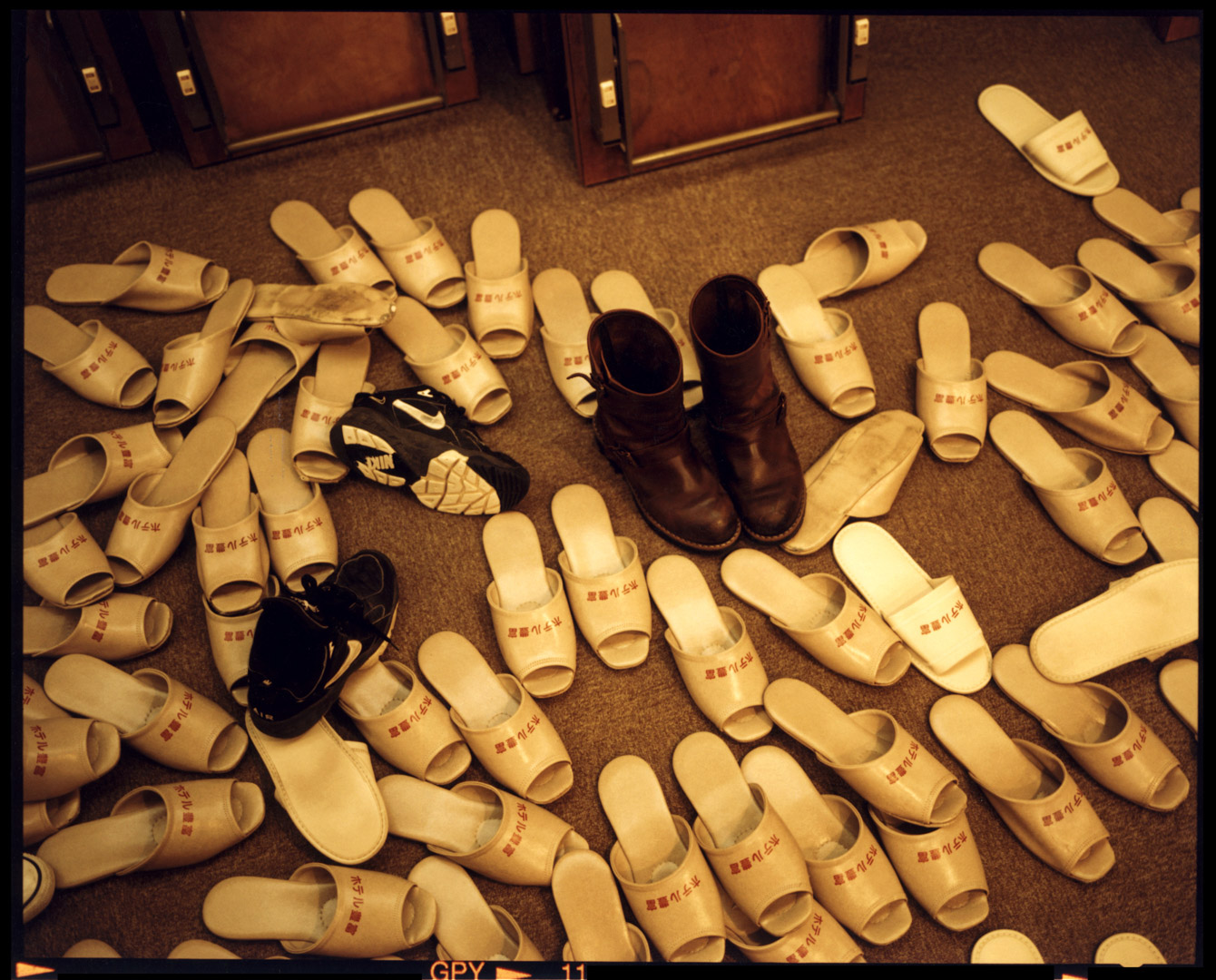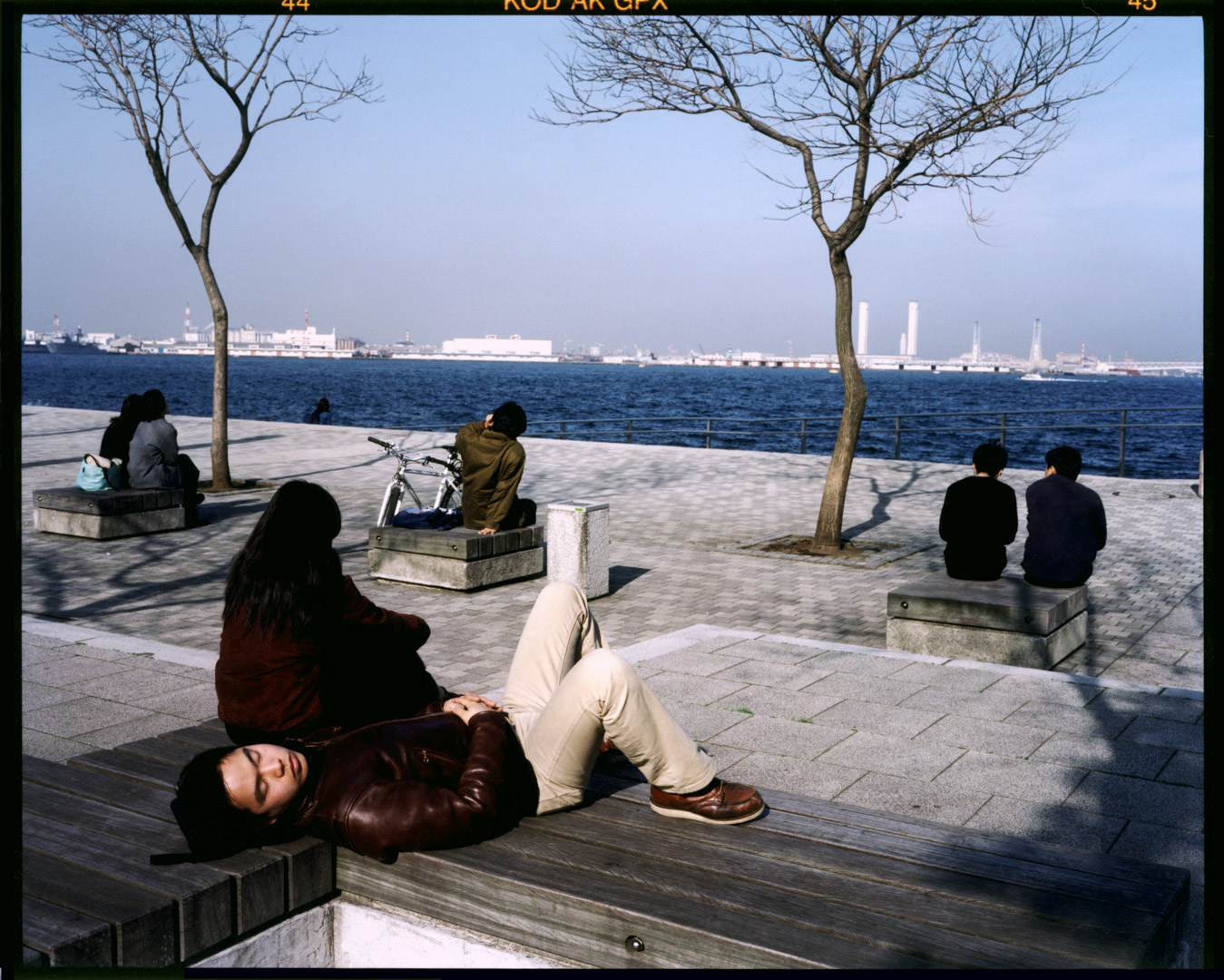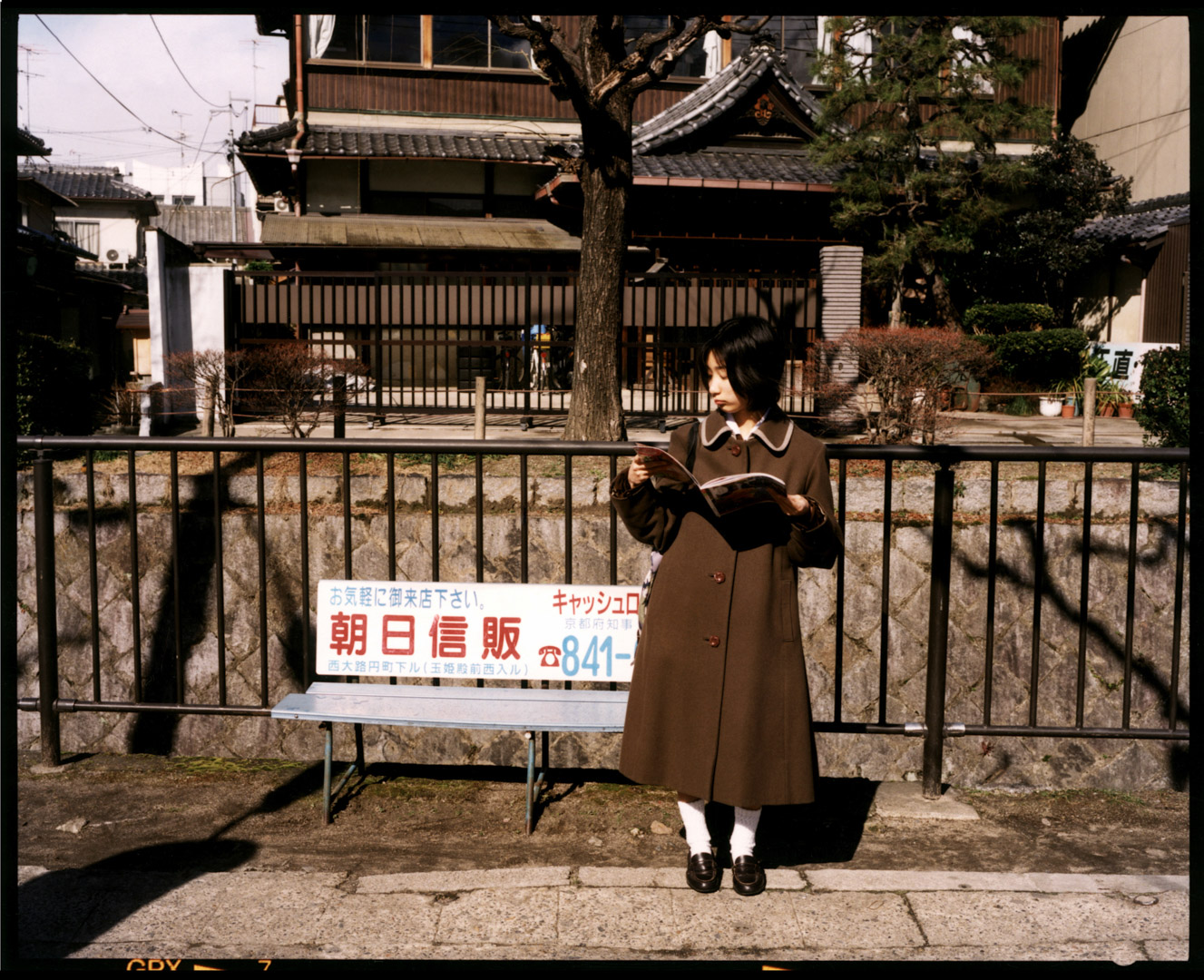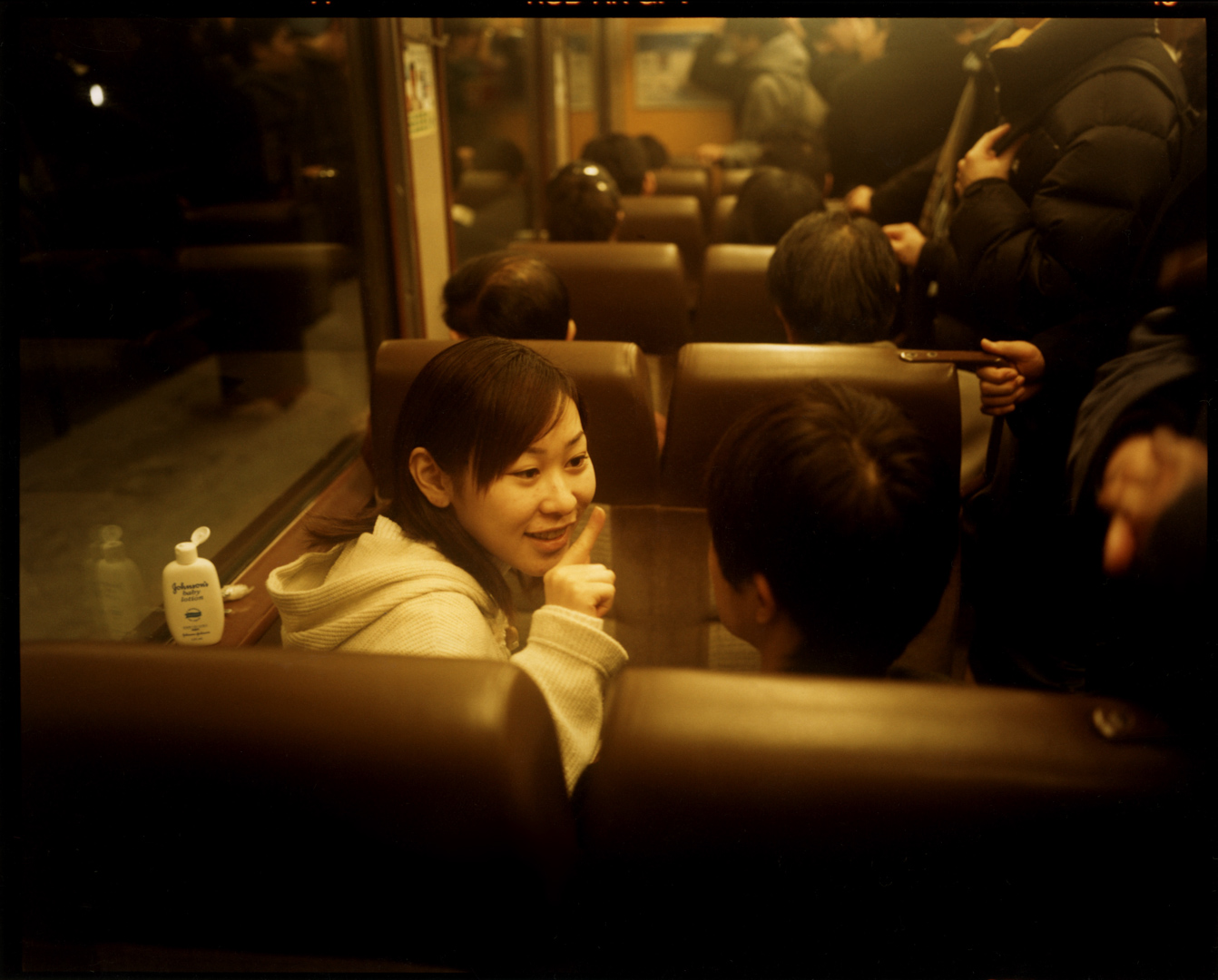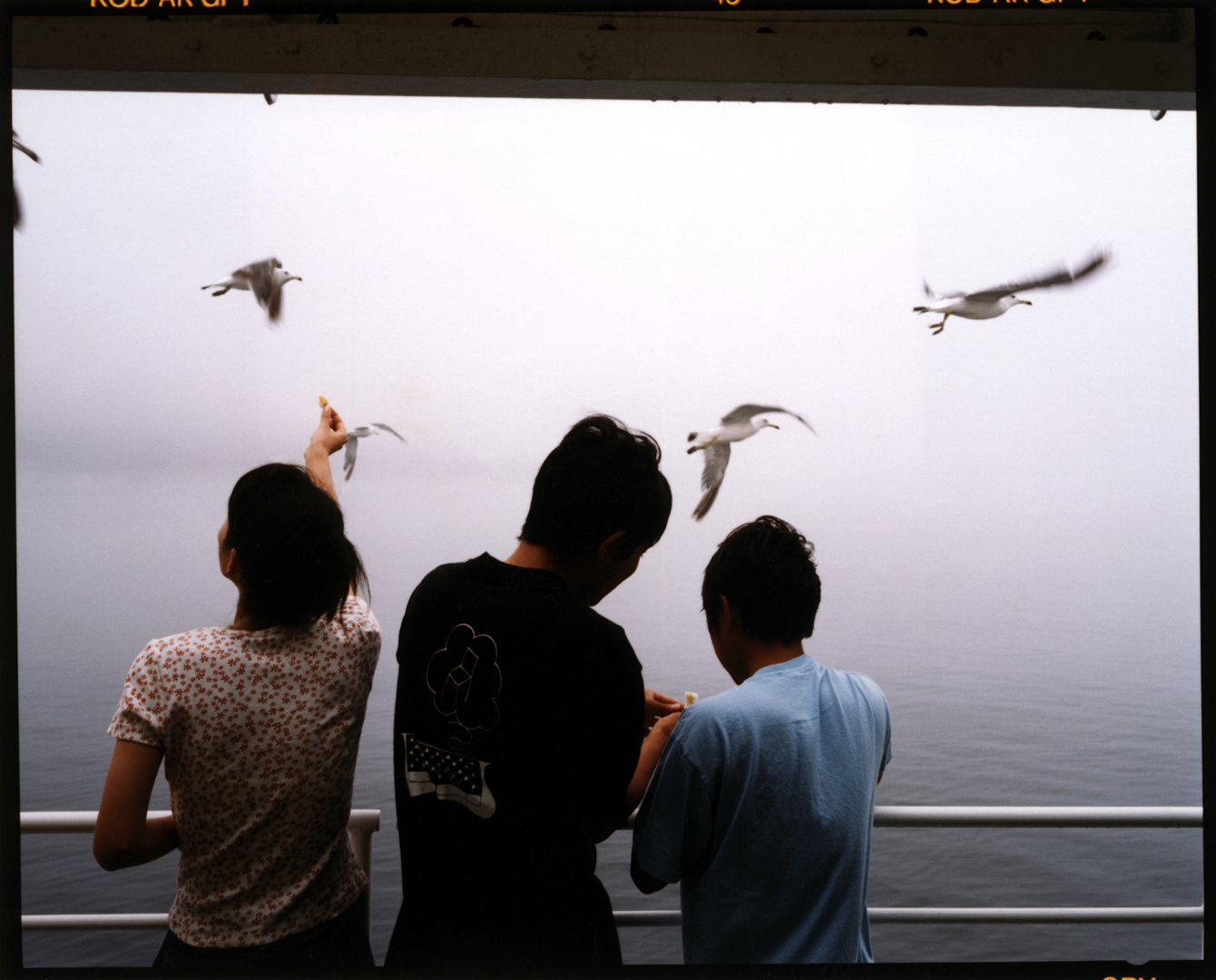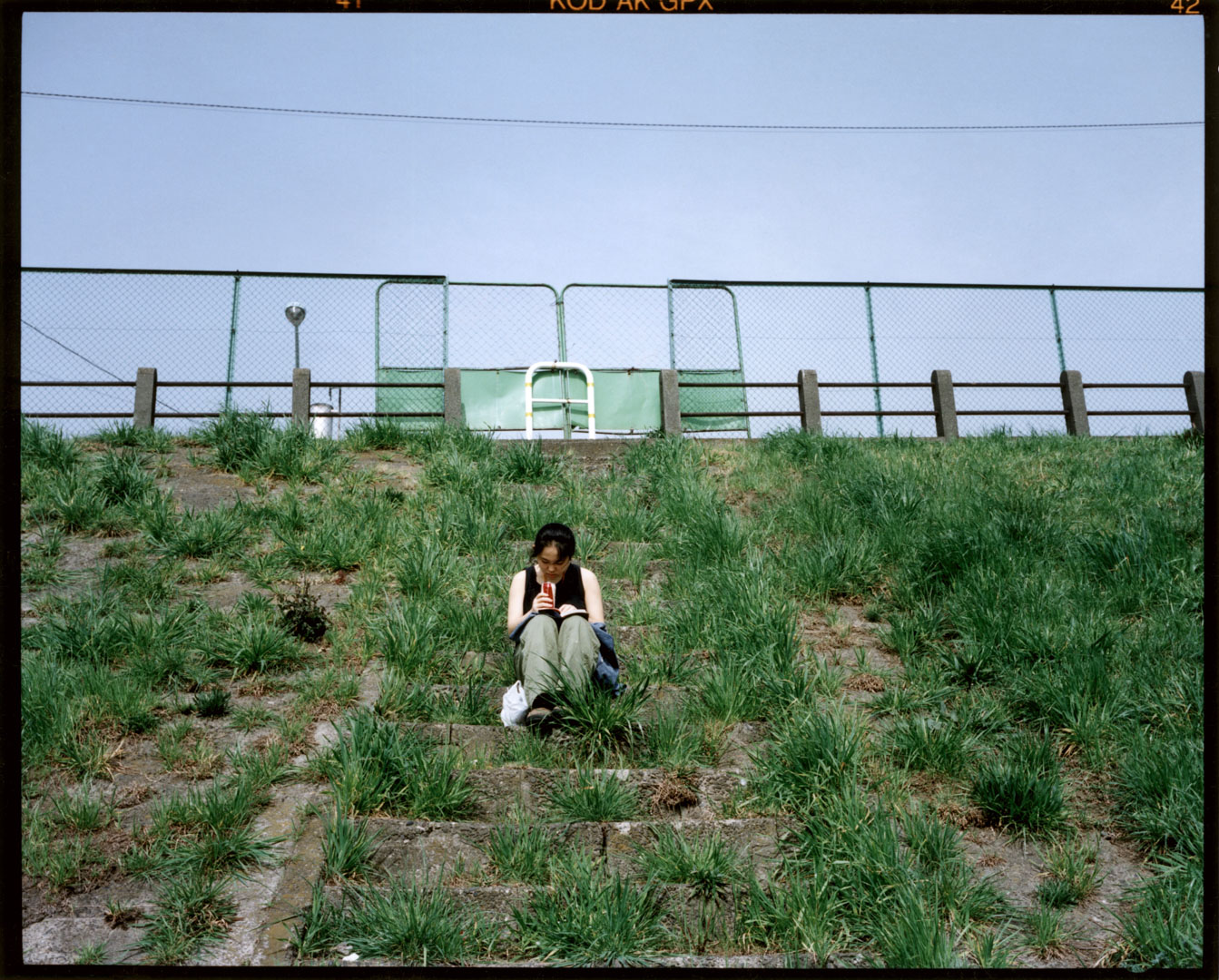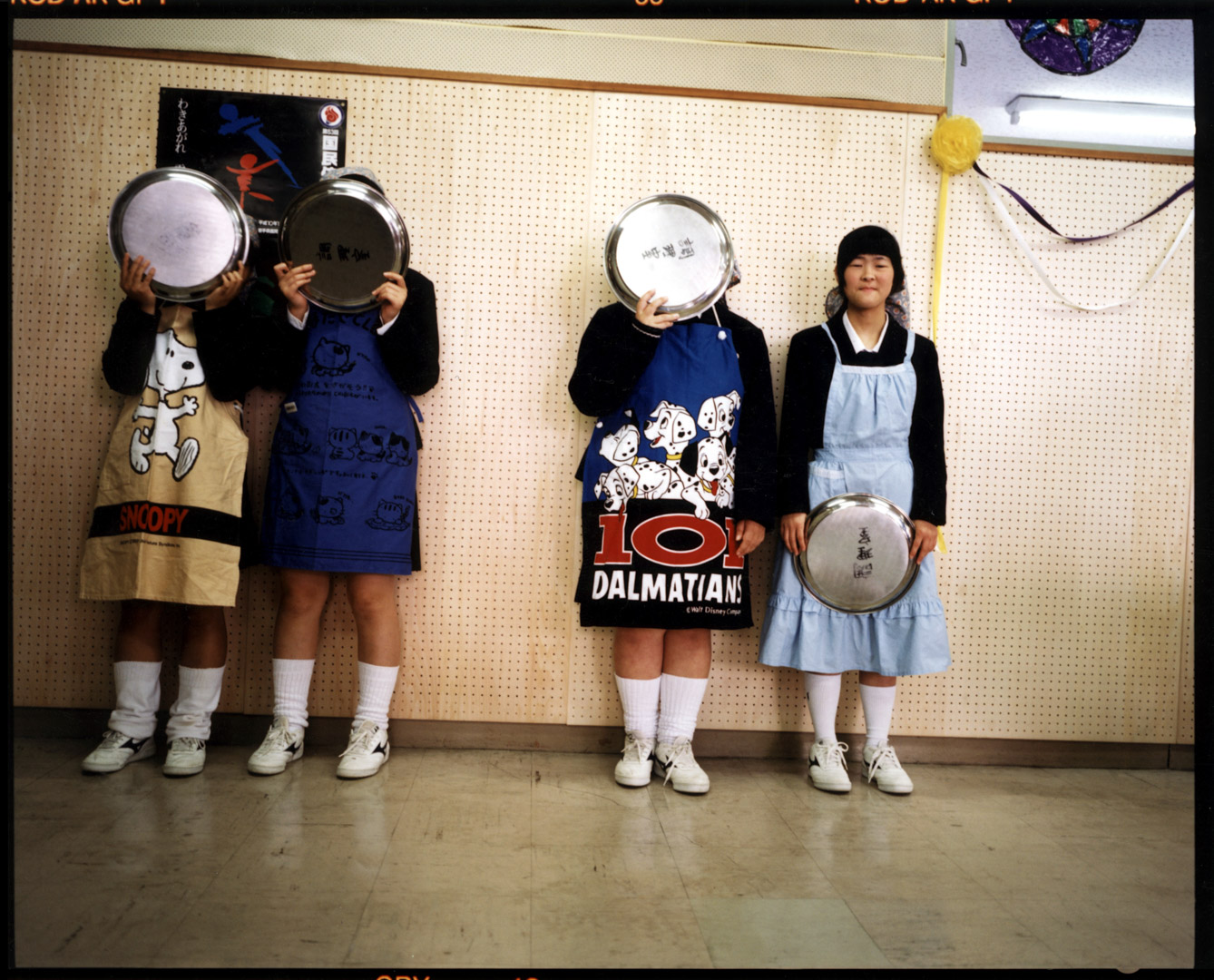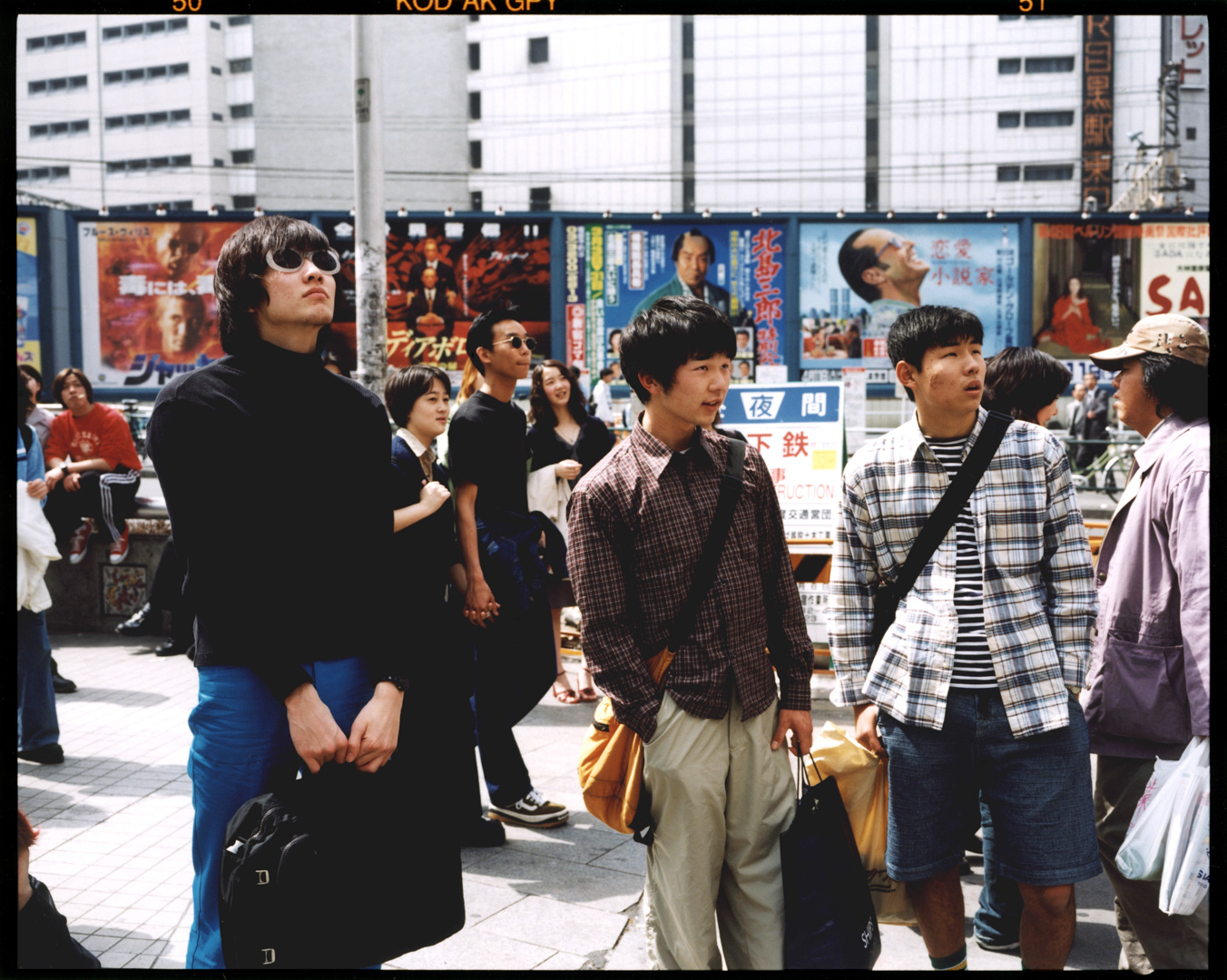The Four Seasons in Japan, 1998
It is a Japanese tale, a naturalist stroll around the emotions of adolescence. Four seasons to evoke the feelings, the questionings, the energy of the young Japanese. But also their relationship to the natural elements, water, earth, fire. Summer at the water’s edge, beach games, sand and sea. Universality of adolescent codes. Then autumn in the mountains of Hannamaki. Far from Tokyo, rural and agricultural Japan, rice fields, orchards. The apprentice farmers embrace under the apple trees…
The winter lost at the end of Hokkaido, the whiteness of the landscapes to infinity. The uniforms of high school students stand out on the snow. Sometimes the bodies fall and roll away, the cold awakens numb limbs. And again spring, the festival of “Sakuras”, cherry blossoms. Eternal.
In Tokyo, the universal codes of adolescence brought me from rock bands to high school parties. Urban and colorful wandering. Opening season where bodies awaken to feelings of love.
“Natsu ni Uta u Ningyo”, the song of the sirens in summer: The sea is calm, towards Yamada. Four heads come out of the water. Blue scales, smiling faces. The sirens sing in summer. The bodies are smeared with brown sand.
Play of materials. In the distance the “hanna-bi”, small fireworks illuminate the beach. Tribute to Kenji Miyazawa, universalist poet and Tadeshi Kitano, luminous filmmaker. It is the season of spirits, “o-bon”, the feast of the dead. The ancestors return to dance the time of a starry night. Young Japanese people practice these rites with a certain fervor, a sign of their attachment to Buddhist traditions.
“Kudamono no Aki”, The fruits of autumn: 600 km from Tokyo, in the north, Hannamaki and its agricultural high school created by Kenji Miyazawa in the middle of the twentieth century to fight illiteracy in rural areas. The leaves fall. The bodies shiver in front of the wind coming from the north, “Kase no Matasaburo”. The students seek shelter. Apples picked on the hillside. Flowers in greenhouses, lovingly cared for.
“Wakkanai” The extremities of winter: Facing the Sakhalin Islands. Here the information is translated into Russian. The temperature is close to -15 °, “Samui des”, the cold numbs the limbs. This is the time for shortcuts to get home faster. Bodies throw themselves into the snow, cries of joy.
